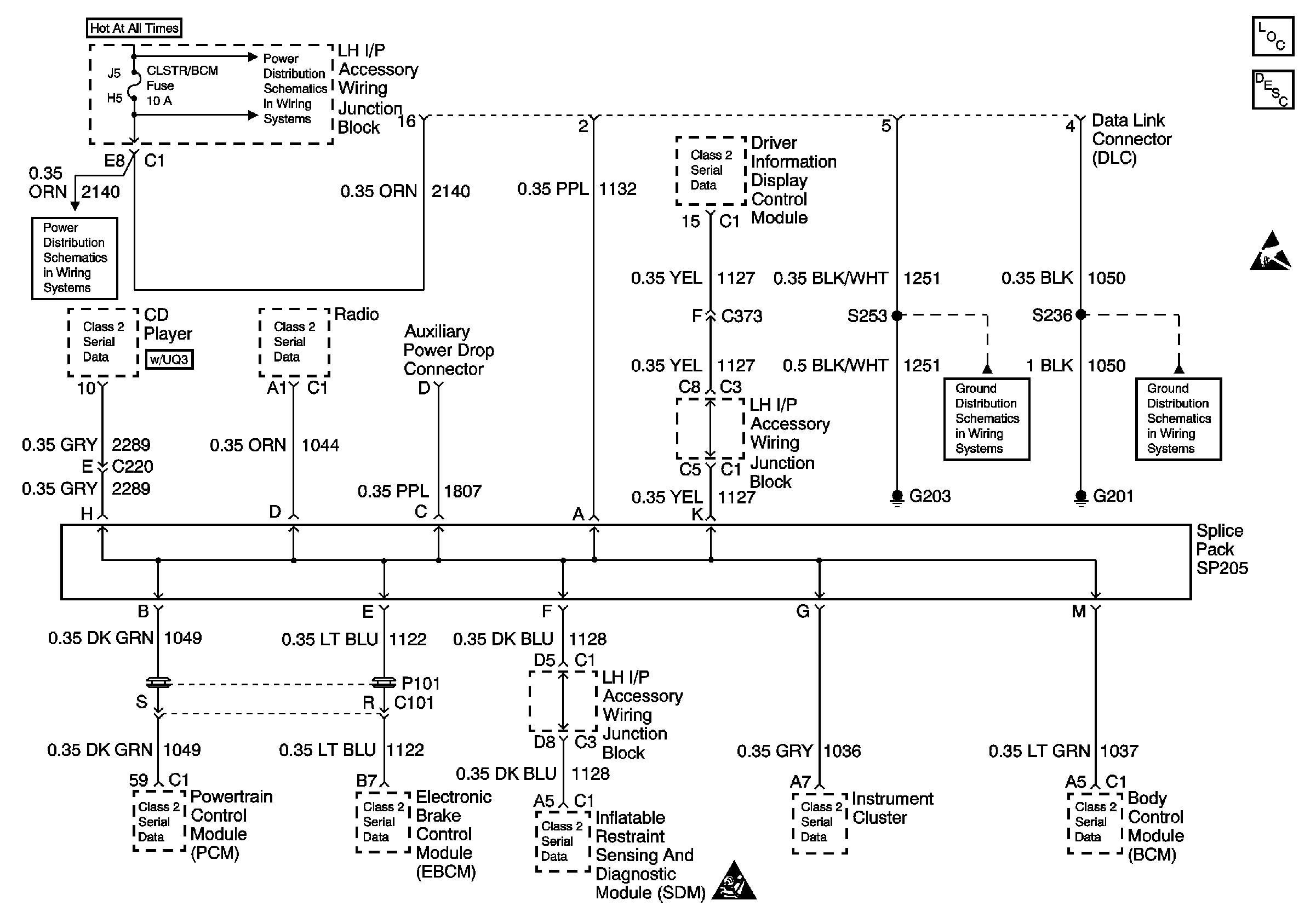Refer to

.
Circuit Description
The powertrain control module (PCM) uses the rough road information to enhance the misfire diagnostic by distinguishing any crankshaft speed variations caused by driving on rough road surfaces from any variations caused by true misfires. The EBCM/EBTCM transmits the rough road information based on inputs from the wheel speed sensors. If a loss of communication occurs which prevents the PCM from receiving the rough road information while DTC P0300 Engine Misfire Detected is requesting the MIL, DTC P1381 will set.
Conditions for Running the DTC
| • | The engine load is less than 87.5 percent . |
| • | The engine speed is less than 5000 RPM. |
| • | The vehicle speed is more than 10 mph. |
| • | A misfire DTC is occurring and requesting MIL illumination. |
Conditions for Setting the DTC
The PCM detects a loss of communication with the EBCM/EBTCM for at least 5 seconds.
Action Taken When the DTC Sets
The PCM stores conditions which were present when the DTC set as Failure Records only. This information will not be stored as Freeze Frame Records.
Conditions for Clearing the MIL/DTC
| • | The DTC becomes history when the conditions for setting the DTC are no longer present. |
| • | The history DTC clears after 40 malfunction free warm-up cycles. |
| • | The PCM receives a clear code command from the scan tool. |
Diagnostic Aids
Inspect for the following conditions:
Many situations may lead to an intermittent condition. Perform each inspection or test as directed.
Important: : Remove any debris from the connector surfaces before servicing a component. Inspect the connector gaskets when diagnosing or replacing a component. Ensure that the gaskets are installed correctly. The gaskets prevent contaminate intrusion.
| • | Loose terminal connection |
| - | Use a corresponding mating terminal to test for proper tension. Refer to Testing for Intermittent Conditions and Poor Connections , and to Connector Repairs in Wiring Systems for diagnosis and repair. |
| - | Inspect the harness connectors for backed out terminals, improper mating, broken locks, improperly formed or damaged terminals, and faulty terminal to wire connection. Refer to Testing for Intermittent Conditions and Poor Connections , and to Connector Repairs in Wiring Systems for diagnosis and repair. |
| • | Damaged harness--Inspect the wiring harness for damage. If the harness inspection does not reveal a problem, observe the display on the scan tool while moving connectors and wiring harnesses related to the sensor. A change in the scan tool display may indicate the location of the fault. Refer to Wiring Repairs in Wiring Systems for diagnosis and repair. |
| • | Inspect the powertrain control module (PCM) and the engine grounds for clean and secure connections. Refer to Wiring Repairs in Wiring Systems for diagnosis and repair. |
If the condition is determined to be intermittent, reviewing the Snapshot or Freeze Frame/Failure Records may be useful in determining when the DTC or condition was identified.
Test Description
The numbers below refer to the step numbers on the diagnostic table:
-
This step ensures that the EBCM/EBTCM is capable of transmitting serial data on the Class 2 serial data circuit.
-
This step tests the Class 2 serial data circuit at the EBCM/EBTCM for the correct voltage.
Step | Action | Values | Yes | No |
|---|---|---|---|---|
1 | Did you perform the Powertrain On-Board Diagnostic (OBD) System test? | -- | ||
2 | Did you perform the ABS Diagnostic System Check? | -- | Go to Diagnostic System Check - ABS in Antilock Brake Systems | |
3 |
Important: : If a loss of data link connector (DLC) data has already been diagnosed, clear this DTC and continue diagnosis with Powertrain On Board Diagnostic (OBD) System Check . Are any BCM, ABS, or UXXXX DTCs present? | -- | Go to the applicable DTCs | |
4 |
Important: : The replacement PCM must be programmed. Replace the PCM. Refer to Powertrain Control Module Replacement/Programming . Did you complete the replacement? | -- | -- | |
5 |
Does the scan tool indicate the DTC failed this ignition? | System OK |
